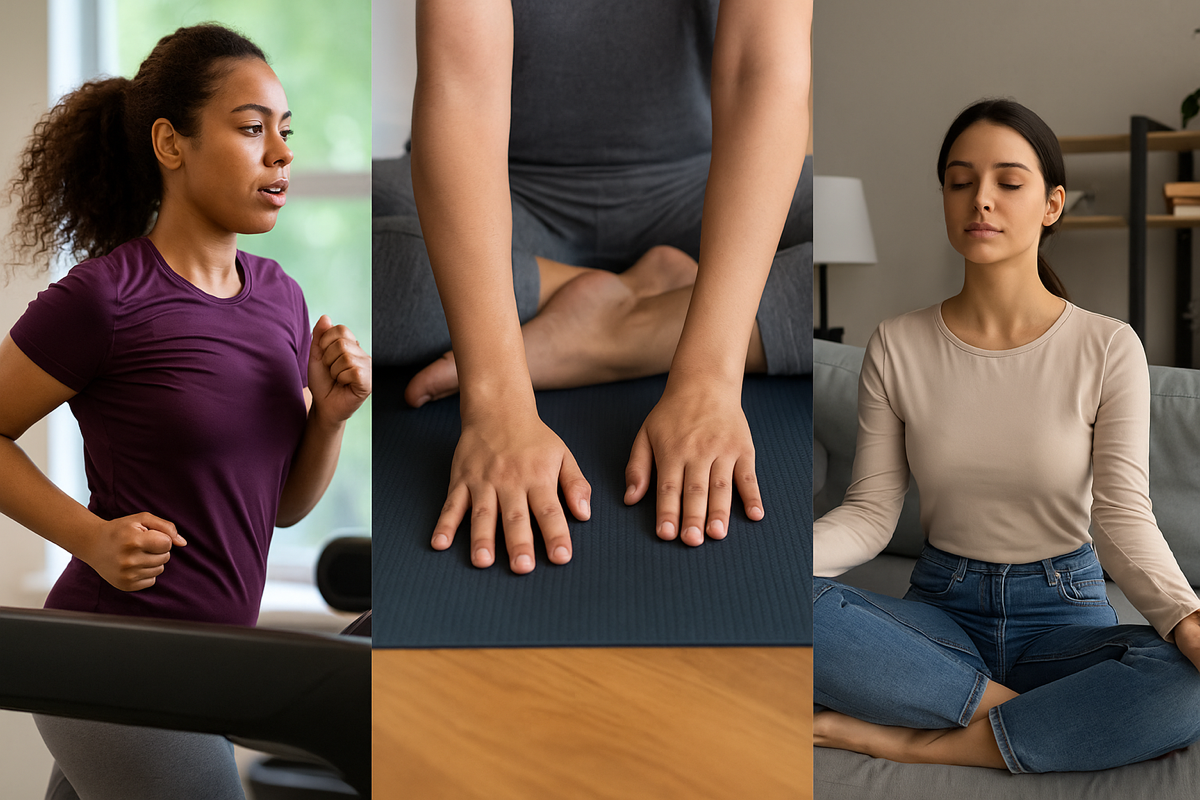Living with ADHD or generalized anxiety disorder (GAD) can feel like running a race with your brain constantly shifting gears. While medication and therapy remain cornerstones of treatment, one powerful tool often goes under-utilized: exercise. Research shows that regular physical activity doesn’t just improve physical health—it can also significantly improve focus, mood, and emotional regulation.
Why Exercise Works for ADHD and Anxiety
- Boosts Dopamine & Norepinephrine ADHD is closely tied to imbalances in neurotransmitters like dopamine and norepinephrine. Exercise naturally increases these brain chemicals, improving focus, motivation, and attention—similar to how stimulant medications work.
- Reduces Cortisol (Stress Hormone) Anxiety is often fueled by excess cortisol. Exercise helps regulate the stress response, lowering cortisol and promoting a calmer state of mind.
- Improves Sleep Both ADHD and anxiety can disrupt sleep, creating a vicious cycle. Regular exercise helps reset circadian rhythms, leading to deeper, more restorative rest.
- Enhances Executive Function Aerobic activity has been shown to sharpen executive functioning—the mental processes responsible for planning, decision-making, and self-control—areas often challenging for those with ADHD.
Best Types of Exercise for ADHD and Anxiety
- Aerobic Workouts (running, biking, swimming) Great for releasing endorphins, lifting mood, and sharpening focus.
- Strength Training (weights, resistance bands, bodyweight) Helps with discipline, routine, and physical confidence.
- Yoga & Mind-Body Movement Combines mindfulness with gentle physical activity—ideal for calming anxiety and improving emotional regulation.
- Team Sports or Group Fitness Provide accountability, social connection, and added dopamine boosts from group interaction.
How to Get Started (Even if Motivation is Hard)
- Start Small Even 10 minutes of walking or stretching can reduce anxiety and sharpen focus.
- Build Routine into Daily Life Pair exercise with something you already do—like walking while listening to a podcast or doing push-ups after brushing your teeth.
- Make It Enjoyable Choose activities you like, not just what you “should” do. Enjoyment increases consistency.
- Use Exercise as a Reset Tool When racing thoughts or restlessness hit, a quick burst of movement (like jumping jacks, dancing, or a brisk walk) can regulate energy fast.
Final Thoughts
Exercise isn’t a cure-all, but it’s a scientifically backed, accessible, and empowering tool for managing both ADHD and generalized anxiety. Whether it’s a morning run, a yoga class, or a quick walk between meetings, moving your body can quiet the noise in your mind and help you take back control.
👉 If you’re living with ADHD or anxiety, try adding just 15 minutes of movement into your day—you might be surprised how much clearer and calmer you feel.
